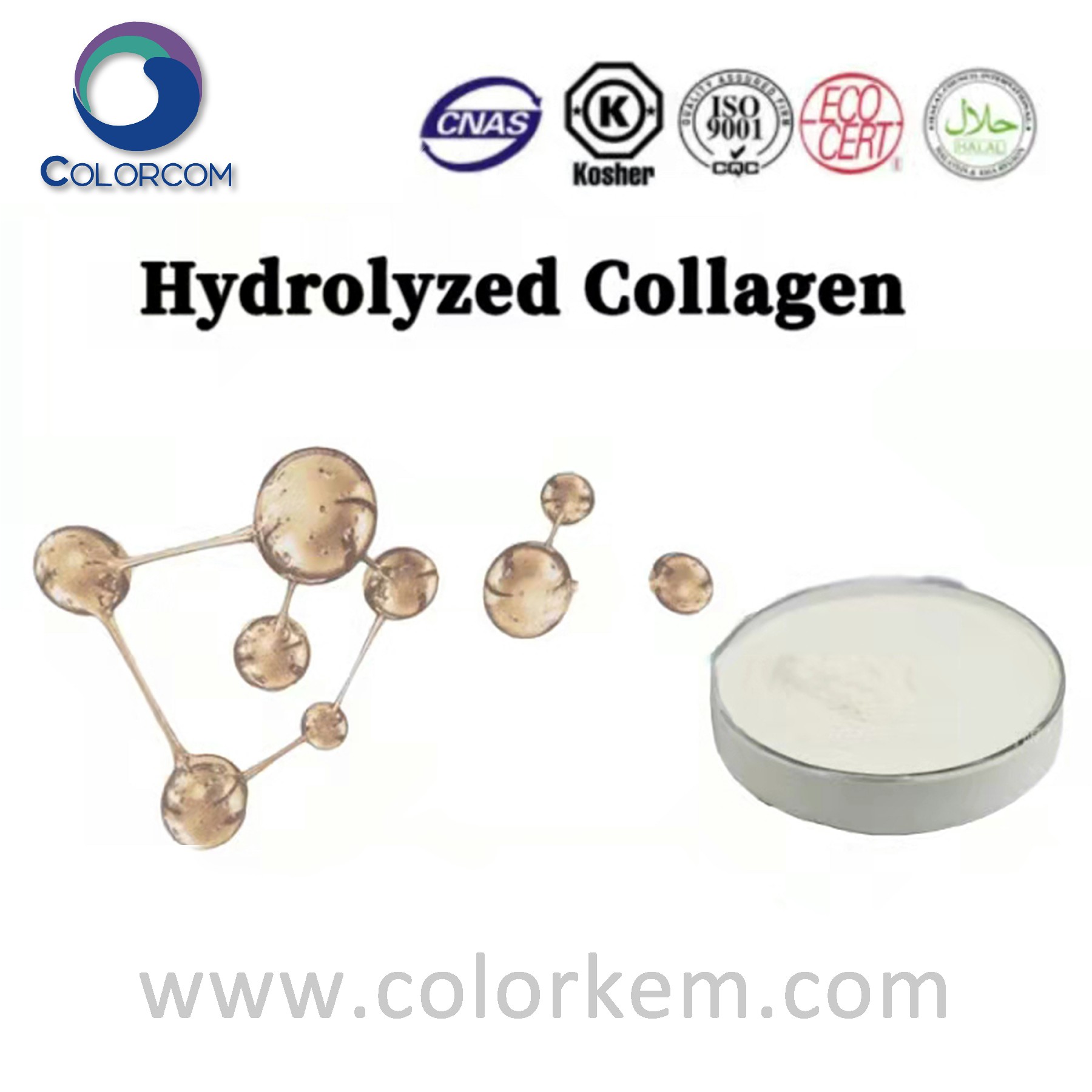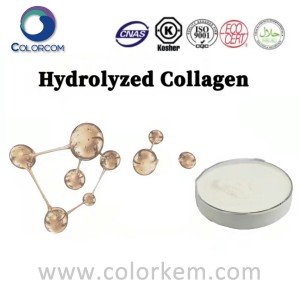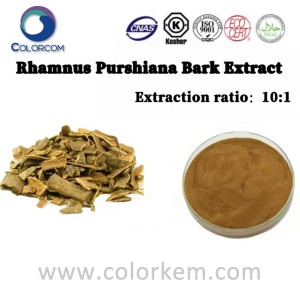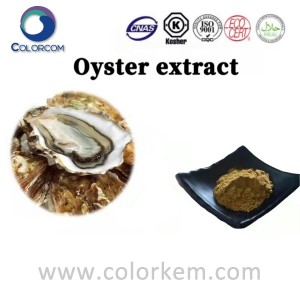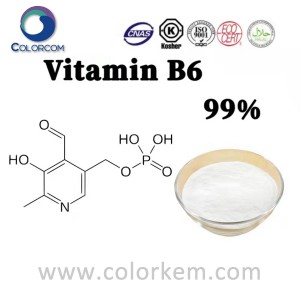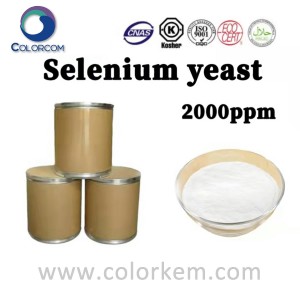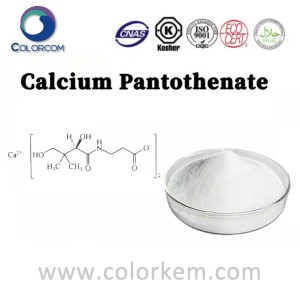Hydrolyzed Collagen | 92113-31-0
Product Description:
Product Description:
After enzymatic hydrolysis of collagen, it can become hydrolyzed collagen (Hydrolyzed Collagen, also known as collagen peptide).
Collagen polypeptide contains 19 kinds of amino acids. Collagen (also called collagen) is a structural protein of the extracellular matrix and is the main component of the extracellular matrix (ECM), accounting for approximately 85% of the solids of collagen fibers.
Collagen is a ubiquitous protein in the animal body, mainly in the connective tissue (bone, cartilage, skin, tendon, toughness, etc.) 6%.
In many marine organisms, such as the skin of fish, its protein content is even as high as 80%.
Function of Hydrolyzed collagen
Hydrolyzed Collagen are widely used in cosmetics, having such functions as anti-wrinkle, whitening, repairing, moisturizing, cleansing, and improving skin elasticity.
Hydrolyzed Collagen can be used in body care products, which can activate cells, improve the immune function, defy aging, prevent skin aging, reduce weight, tone up the body, enlarge breast, and so on.
Production method of Hydrolyzed Collagen
Hydrolyzed collagen is extracted from the bones and skin of animals that have undergone health quarantine, and the minerals in the bones and skin are eluted with food-grade dilute acid. Pig or fish) after being treated with alkali or acid, high-purity reverse osmosis water is used to extract macromolecular collagen protein at a certain temperature, and then through a special enzymatic hydrolysis process, the macromolecular chain is effectively cut, and the most complete retention Effective amino acid groups, and become hydrolyzed collagen with a molecular weight of 2000-5000 Daltons.
The production process achieves the highest level of biological activity and purity through multiple filtration and removal of impurity ions, and through a secondary sterilization process including a high temperature of 140 °C to ensure that the bacterial content is below 100/g (this level of microorganisms is much higher than 1000/g of the EU standard), and spray-dried through a special secondary granulation to form a highly soluble, fully digestible hydrolyzed collagen powder. Soluble in cold water, easily digested and absorbed.
Advantages of Hydrolyzed Collagen
(1) Hydrolyzed collagen has good water absorption:
Water absorption is the ability of protein to absorb or absorb water. After collagenase hydrolysis, hydrolyzed collagen is formed, and a large number of hydrophilic groups are exposed, resulting in a significant increase in water absorption.
(2) The solubility of hydrolyzed collagen is good:
The water solubility of protein depends on the number of ionizable groups and hydrophilic groups in its molecule. The hydrolysis of collagen causes the breakage of peptide bonds, resulting in some polar hydrophilic groups.
The increase in the number of (such as -COOH, -NH2, -OH) reduces the hydrophobicity of the protein, increases the charge density, increases the hydrophilicity, and increases the water solubility.
(3) High water retention capacity of hydrolyzed collagen:
The water retention capacity of protein is affected by protein concentration, molecular mass, ion species, environmental factors, etc., and is usually expressed by the water residual rate.
As the degree of collagen hydrolysis increases, the water retention rate also increases gradually.
(4) Chemotaxis of hydrolyzed collagen to fibroblasts:
Prolyl-hydroxyproline will appear in peripheral blood after human ingestion of hydrolyzed collagen, and prolyl-hydroxyproline may stimulate the skin Fibroblasts grow, increase the number of fibroblasts migrating in the skin, improve the transformation of epidermal cells, accelerate the flow of water through the skin layer, enhance the skin's moisturizing ability, and prevent the formation of deep wrinkles.
Application of Hydrolyzed Collagen in Cosmetics
Collagen is enzymatically hydrolyzed to form hydrolyzed collagen, and its molecular structure and molecular weight are changed, resulting in changes in its functional properties such as water absorption, solubility, and water retention.
The chemotaxis of hydrolyzed collagen to fibroblasts stimulates the growth of fibroblasts in the skin, significantly increases fibroblast density, collagen fiber diameter and density, and the percentage of dermatan sulfate in decorin, making the skin mechanically strong Increased, improved mechanical properties, increased softness and elasticity, stronger moisturizing ability, and improved fine and deep skin wrinkles.


